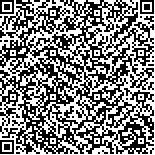下载中心
优秀审稿专家
优秀论文
相关链接
摘要

地表参数定量遥感反演是遥感科学研究的重要环节。21世纪以来,地球静止气象卫星数据在地表参数遥感反演中受到越来越多的重视。本文对利用地球静止气象卫星进行地表参数遥感反演研究的进展进行了综述。文章首先简单介绍了当前正在运行的欧盟Meteosat、美国GOES-R、日本葵花和中国风云静止卫星系统,随后详细总结了不同卫星系统估算各种地表参数的方法。在此基础上,文章对进一步利用静止卫星估算地表参数的研究展开讨论,指出未来的研究应重点关注几个方面:(1)探索和运用新技术提高静止卫星数据获取和处理的效率和精度;(2)融合全球多颗静止气象卫星,同时与极轨卫星融合,生产覆盖全球的长时序地表参数产品;(3)探索地表参数的高效获取方法,对静止气象卫星地表参数产品开展真实性检验,满足地表过程研究和资源环境动态监测对高质量地表参数产品的需求。
Since the beginning of this century, more and more attention has been given to using geostationary meteorological satellite data in the retrieval of land surface parameters. This paper gives an overview of the recent developments on the retrieval of land surface parameters from geostationary satellite data. Geostationary meteorological satellites have been developed in Europe (Meteosat), United Sates (GOES-R), Japan (Himawari), and China (FY series). The geostationary satellite data volume is usually high because of the high temporal revisit frequency, which poses great challenges to data storage, parameter retrieval and product distribution. Nonetheless, each satellite program has developed a series of land surface products to support near real-time applications.Various methods to estimate land surface parameters are described. The Meteosat SEVIRI is leading the development of land surface products, especially the unique long-term Thematic Climate Data Record (TCDR) products. The standard products include Land Surface Temperature (LST), longwave and shortwave radiances, albedo, fraction vegetation cover, leaf area index, the fraction of absorbed photosynthetic active radiation, and gross primary production, evapotranspiration, latent and sensible heat flux, wild fire, and snow cover. Among the standard products, the LST, radiance, and albedo are also distributed in the TCDR products. GOES-R and FY-4A are also releasing similar preliminary products, but their quality still need to be fully validated. The Himawai-8 products are still in the research stage. Further physical retrieval methods and various machine learning inversion methods can be explored to improve the accuracy of parameter inversion. It is also necessary to improve the quality of auxiliary atmospheric field data and model simulations to facilitate the land surface parameter retrieval.Multiple geostationary satellites can be integrated to provide long-term observations and global coverage. EUMETSAT has integrated all TCDR products generated from the first-and second-generation Meteosat data, and the National Oceanic and Atmospheric Administration (NOAA) has released all GOES level-1B data since 1979. These two dataset can be used to generate long-term continuous land surface products. GOES-R and Himawari-8 data have also been combined to generate high quality top-of-atmosphere reflectance and bright temperature products, which will greatly facilitate the generation of other land surface parameters. Geostationary satellite data can also be combined with the polar orbiting satellite data in land surface parameter retrieval; however, current studies are mostly carried out on small regional scales, whereas national and global studies are relatively deficient.Land surface parameters retrieved from geostationary satellites can be validated through comparison with concurrent ground measurements, polar orbiting satellite products and model simulations. However, simultaneous real-time surface data are lacking. On the other hand, current geostationary meteorological satellite data are in the kilometric spatial resolution and are limited for high resolution applications. With its high temporal and spatial resolutions (50 m), the GF-4 satellite launched by China provides a great potential for high resolution land surface monitoring and is worthy of further exploration.Future researches using geostationary satellite data to estimate land surface parameters include: (1) exploration of new techniques to improve the efficiency and accuracy of geostationary satellite data acquisition and processing; (2) integration of multiple geostationary and polar-orbiting satellite data to produce long term global land surface parameters; (3) exploration of automatic field measurement methods to enhance the validation of land surface parameters derived from geostationary satellite data.

